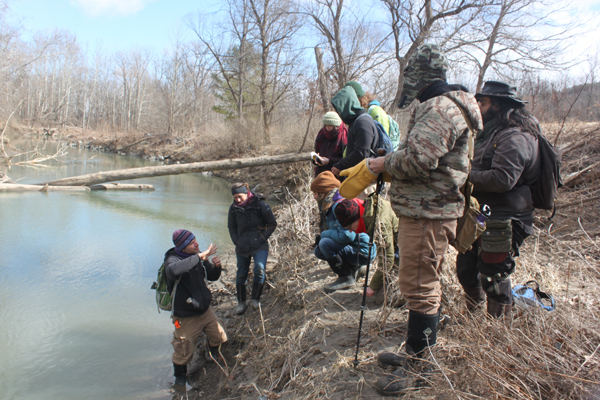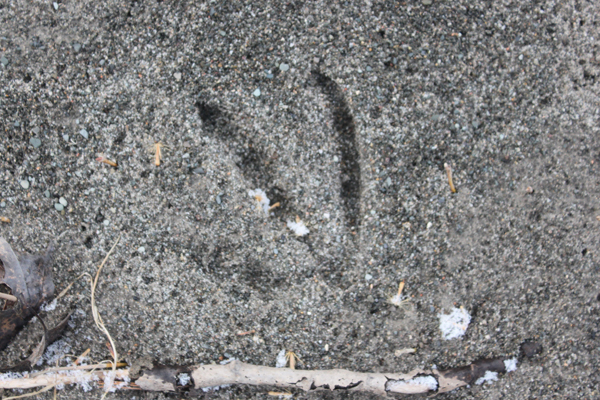World Explorer
Ryan Condo, March 31, 2019
Tracking Workshop March 2019
My eyes lock into a mushed mud track as I sway around and inspect it. There’s a level of focus that comes with tracking that feels subconscious in a way. Like when you’re so honed in on something that it blows your mind when you finally look at your watch and see that what felt timeless was actually a five-hour day. This focus is not one I get to engage with often. As a full-time student with a slew of responsibilities and a somewhat sufficient motivation to complete them, it’s tough to channel all of my thinking into what’s in front of me.
The woods help. The Sycamores serve as barriers to block all of the worries, as well as the sound of traffic down Elmira Road. Out here there’s a connection with the world beyond my own. Inlet Creek is a stream that flows through Tompkins County and into Cayuga Lake. I’ve driven past it numerous times without ever having the sight to acknowledge its existence. But now, outside of my daily universe and on the stomping grounds of a wide array of wild animals, my eyes are adjusted to see from a new perspective. One where I’m not trapped in my own world but discovering ours.
“What happened here?”
That’s how we are instructed to frame our thinking as we wander the sandy washed shores and muddy flats looking for the sight of any wrinkle in the Earth’s surface to determine whether it’s a footprint or not. When discovered, each print opens a story book of questions beyond the sacred “what happened here?”
The first big question to answer is: what animal could have left that track? While explaining, Jason (one of our instructors) tells us a story about him tracking with a group of students. They spent a long time looking at a mark in the mud only to eventually find it was left by a beer can. Hence, it’s also important to establish whether what you see is actually a track. This part of tracking alone raises many more questions to be answered. After identifying the animal, we can then try to understand why that animal chose to come here. We can try to figure out when the animal was here. We can even make an educated guess on how the animal felt when they were traveling through this area just by looking at its tracks!
Unfortunately, my new perspective did not give me the ability to answer many of these questions. I am still me, and my only previous tracking experience involved a FedEx package and a long number. Many of the ideas and key words like “gate analysis” and “tarsal pad” foreign to me. Tracking was a new language, and one I struggled with learning as I looked into prints providing more questions than answers. Luckily, I learned this was a good thing! Who knew?
I found the freedom of nature embraces asking questions. With so much unknown, it’s only natural to inquire and learn. Jason and Jed tell us to ask questions and continue to question ourselves as we try to identify tracks. When we come to conclusions, we are told to try to prove ourselves wrong. We learn that there’s nothing wrong with being wrong. Being wrong is how you learn. It’s how you grow.
It’s crazy to think that in my world all I try to do is get everything right. Whether it’s grades, or work, or just about anything. There’s constant pressure to do everything perfectly. It’s not until I take a step outside of that world that I realize that’s impossible. I get so caught up in the task itself to realize the absurdity that comes with thinking the first time I touch a video camera I’m going to be like Martin Scorsese. It’s refreshing out here to be allowed to be wrong. To be encouraged to be wrong.


